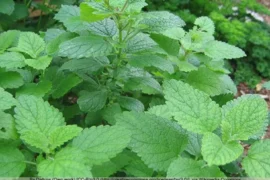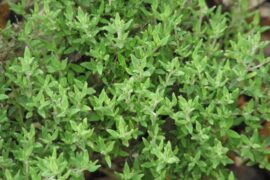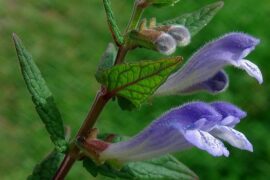Table of Contents
ToggleIntroduction
Have you ever wondered how to get the most out of your onion harvest? Whether you’re an experienced gardener or just starting, understanding the right way to harvest and store onions can make a world of difference. If you don’t do it properly, you could end up with moldy, sprouting onions that rot before you even get to use them. Not ideal, right?
In this guide, we’ll walk through everything you need to know about harvesting onions at the perfect time and how to store them so they stay fresh for months. So, let’s dig into the details—your onions will thank you!

Understanding Onion Growth and Maturity
Before diving into the harvesting process, it’s crucial to understand when your onions are ready. Harvesting too early or too late can affect the quality and storage life of your onions.
Identifying When Onions Are Ready to Harvest
The first step is knowing when your onions are mature. Typically, onions are ready to harvest when the tops—those green, leafy stalks—start to fall over and turn yellow. This is a clear sign that the onion has finished growing and is now sending all its nutrients to the bulb, which is exactly what you want.
The Importance of Timing in Onion Harvesting
Timing is everything. If you pull your onions too early, they’ll be small and underdeveloped. If you leave them in the ground too long, they may start to rot, especially if the soil becomes too wet. Onions are best harvested when the weather is dry, and the tops have completely fallen over.
Types of Onions and Their Maturity Timelines
Different types of onions mature at different rates. For example:
- Spring onions (green onions) mature in about 30-50 days.
- Yellow or white onions can take up to 100-120 days to fully mature.
Keep these timelines in mind when planning your harvest.
How to Harvest Onions the Right Way
Now that you know when your onions are ready, let’s talk about how to harvest them without causing damage.
Tools You’ll Need for Harvesting
You don’t need any fancy equipment for harvesting onions. A simple garden fork or trowel will do the job. Make sure you have gloves to protect your hands, and if the ground is hard, a garden fork can help loosen the soil.
Step-by-Step Guide to Harvesting Onions
- Wait for a dry day to harvest. Wet conditions can make onions more prone to rot during storage.
- Gently loosen the soil around the onions with your fork.
- Pull the onions out by their tops, being careful not to bruise the bulbs.
- Lay the onions out on the ground to dry in the sun for a day or two. This helps remove excess moisture before curing.
Common Mistakes to Avoid During Harvesting
- Pulling too hard: This can bruise or damage the onions, leading to quicker spoilage.
- Harvesting when the soil is wet: Wet soil clinging to the bulbs can promote rot during storage.
- Leaving onions in the ground for too long: This invites pests and disease, compromising your crop.
Preparing Onions for Storage
Once your onions are out of the ground, they aren’t quite ready for long-term storage yet. You need to prepare them through a process called curing.
Curing Onions for Long-Term Storage
What is Onion Curing?
Curing is the process of allowing the onions to dry fully. This step toughens up the outer skin, which acts as a natural protective layer against mold, moisture, and pests.
Best Practices for Curing Onions
- Spread the onions out in a single layer in a warm, dry, well-ventilated space.
- Leave them to cure for 2-3 weeks, turning them occasionally to ensure even drying.
- You’ll know they’re ready when the necks (the area where the tops meet the bulb) are completely dry and the outer skin is papery.
Cleaning and Trimming Onions After Harvest
Once cured, trim the tops to about 1 inch and remove any remaining dirt. Don’t wash the onions before storing—this can introduce moisture, which you want to avoid.
Storing Onions for Maximum Freshness
Proper storage is key to keeping your onions fresh for as long as possible.
Ideal Conditions for Storing Onions
Temperature and Humidity Requirements
Onions store best in cool, dry places. The ideal temperature is between 32°F and 40°F, with low humidity. High humidity can cause the onions to sprout or rot.
Best Storage Locations for Onions
Basements, cellars, or cool garages are great places to store onions. Just ensure they’re kept in a well-ventilated area, as lack of airflow can lead to moisture buildup.
Different Methods for Storing Onions
There are several ways to store onions depending on what works best for your space.
Hanging Onions in Mesh Bags
Mesh bags or pantyhose are perfect for storing onions because they allow for excellent airflow. Tie off the end between each onion to prevent them from touching, and hang them in a cool place.
Storing Onions in Crates or Baskets
You can also store onions in well-ventilated crates or baskets. Just make sure they’re not stacked too tightly—air needs to circulate around each bulb.
Freezing Onions for Long-Term Storage
If you’re short on space or want your onions to last even longer, freezing is an option. Simply chop the onions, spread them on a baking sheet, and freeze. Once frozen, transfer them to a freezer-safe bag.
How Long Can You Store Onions?
Shelf Life of Stored Onions
Under ideal conditions, onions can last anywhere from 6 months to a year. Spring onions, however, should be eaten much sooner as they don’t store as long.
Signs That Onions Have Gone Bad
Check your onions regularly for signs of spoilage, including:
- Soft or mushy spots
- Mold or black spots
- Sprouting
- Unpleasant odor
Tips for Preventing Onion Spoilage
Avoiding Moisture and Mold
Make sure your onions stay dry throughout the storage process. Moisture is the enemy and can cause mold to develop quickly.
Regularly Checking Stored Onions for Rot
It’s a good habit to check your stored onions every few weeks. If you notice any that have gone bad, remove them immediately to prevent the rot from spreading.
Conclusion
Harvesting and storing onions effectively is a simple process, but it requires attention to detail. By following the steps outlined here—harvesting at the right time, curing them properly, and storing them in the right conditions—you can enjoy your onions for months on end. A little care now will pay off big later!
FAQs
- When is the best time to harvest onions?
The best time to harvest onions is when the tops fall over and turn yellow. This typically happens late in the growing season, around 90-120 days depending on the type of onion. - How long should onions be cured before storage?
Onions should be cured for about 2-3 weeks in a warm, dry, and well-ventilated area. They’re ready for storage when the outer skin is papery, and the neck is fully dried. - Can you freeze onions?
Yes! You can freeze onions by chopping them, spreading them on a baking sheet to freeze, and then transferring them to a freezer-safe bag. They’ll last up to a year in the freezer. - What are the signs of spoiled onions?
Spoiled onions often have soft spots, mold, sprouting, or a foul odor. Always check for these signs before using stored onions. - How can I store onions without them sprouting?
Keep onions in a cool, dry, and dark place with good air circulation. High temperatures or humidity can cause them to sprout prematurely.






1 Comment
Pingback: How to Dry Onions in the Sun - Back Gardener